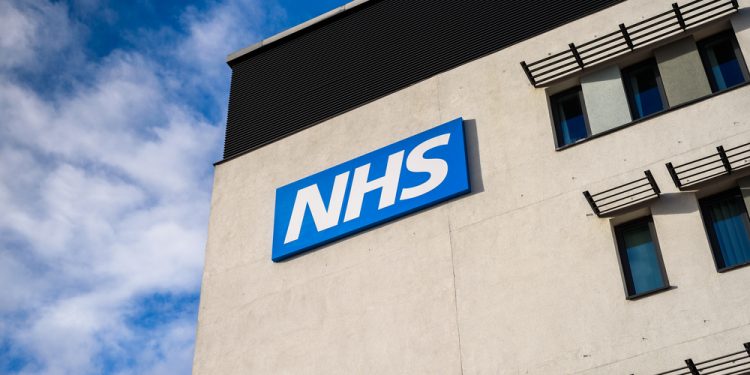The NHS has made further inroads in reducing the number of people waiting for treatment cutting the number on the waiting list by almost 100,000 people in England in November 2023, according to official data.
December data showed the number of referral to treatment (RTT) pathways where a patient was waiting to start treatment at the end of October 2023 was to 7.70 million people, down by around 60,000 from the 7.77 million peak in September.
Today’s figures on November data revealed the figure has now dropped to 7,609,941 people.
Among the 7.6 million, in 355,412 cases the patient was waiting more than a year, in 94,563 cases they were waiting more than 65 weeks, in 11,168 cases they were waiting more than 78 weeks, and in 227 cases they were waiting more than two years.
And while in October patients on multiple pathways and the number of unique patients remained at around 6.5 million people, this figure has also now fallen to around 6.4 million people.
In 58.3% of cases the patient had been waiting up to 18 weeks and so not meeting the 92% standard.
During November 2023, 1,794,107 new RTT pathways were started and 319,668 pathways were completed as a result of admitted treatment and 1,306,227 were completed in other ways (non-admitted).
For those pathways where the patient was waiting to start treatment at the end of November 2023, the median waiting time was 14.4 weeks. The 92nd percentile waiting time was 44.3 weeks. The median and 92nd percentile figures do not contain estimates for missing acute trusts.
Not meeting most important targets
Sarah Woolnough, CEO of The King’s Fund, said the figures showed that the NHS is still not meeting the majority of its most important performance targets this winter.
“On some measures, the situation is better than this time last year, in part thanks to efforts to increase capacity as well as relatively low hospital admissions from Covid-19 and flu, but patients are still not receiving an acceptable level of service,” Woolnough continued.
“Only 69% of people are seen within four hours in A&E compared to the NHS standard of 95%, people are waiting 46 minutes for an ambulance for urgent cases such as strokes when the target is 18 minutes, and 12,200 patients a day remain in hospital despite being well enough to be discharged.
“Behind each of these figures is a person who is struggling to receive the timely care they need and deserve, despite the best efforts of staff.”
Woolnough added that during the challenging winter period, the NHS is prioritising access to the most critical urgent and emergency care services.
“But pressures are widespread across the health and care system, including ongoing industrial action over NHS staff pay and working conditions impacting the speed of elective recovery,” Woolnough said.
“With the waiting list for routine care at 7.6 million, it is increasingly unlikely that the Prime Minister’s pledge to improve waiting list performance by this March will be met.
“The NHS attempted to increase its capacity ahead of winter, for example by expanding the use of virtual hospital beds to care for people in their own homes. However, it remains hamstrung by repeated short-term decisions, such as the delayed release of additional winter funding that helps NHS and social care services prepare for winter.
“To end this cycle of poor performance, the government must make long-term decisions to put the service back on track year-round. This includes making health and care a more attractive place to build a career, bolstering out-of-hospital care such as primary, community and social care services, and helping people live healthier lives through a focus on preventing ill health.”
Glimmer of hope
And according to Brett Hill, head of health and protection at Broadstone, while this latest reduction offers a “glimmer of hope,” as winter continues the reality is that people will struggle to rely on the public health service to sustain their health.
“This is reflected in record private admissions driven both by people looking to fund their own care as well as employers increasing their coverage of private healthcare options within the workforce,” he continued.
“This is a trend we expect to see accelerate as businesses must expand their health and wellbeing provision in order to maintain productivity, attract and retain talent and avoid absenteeism.
“The NHS’ struggles are unlikely to significantly recede over the next couple of years and so it is likely employers will increasingly play a key role in protecting the health of the nation’s workers.”
Unacceptable waits
Tim Gardner, assistant director of policy at the Health Foundation, said today’s data showed that patients continue to experience “unacceptably” long waits for hospital treatment, despite a welcome reduction in the waiting list for routine operations.
“The hard work and dedication of NHS staff has driven a further fall in the waiting list to 7.61 million by the end of November,” Gardner continued.
“But there is still a very long way to go, with over 355,000 patients still having waited over a year for treatment, and making further progress over winter will be extremely difficult.
Gardner maintained the health service is currently working under enormous strain, against a backdrop of prolonged industrial action and recent increases in seasonal flu and Covid-19.
“In December, over 44,000 patients spent over 12 hours waiting on trolleys in A&E departments as no bed was available – 10 years ago, the number was 21,” he added. “While winter is inevitable, the constraints holding the NHS back and fuelling the current crisis are not.
“Further measures to improve NHS performance and productivity are essential. Concrete action is needed to build and support the workforce, boost infrastructure and technology and reform the broken social care system. Without this, patients will continue to face unacceptable waits to access NHS care.”






